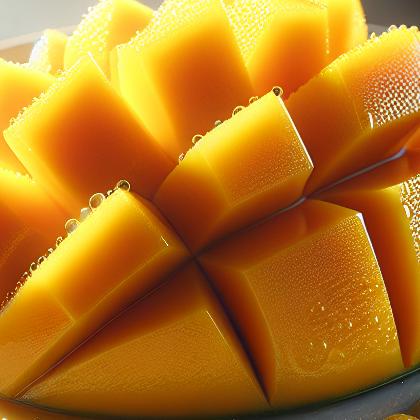Mango Pulp

The mango is a fleshy stone fruit belonging to the genus Mangifera, consisting of numerous tropical fruiting trees, that are cultivated mostly for edible fruits. The majority of these species are found in nature as wild mangoes. They all belong to the flowering plant family Anacardiaceae. The mango is native to South Asia, from where it has been distributed worldwide to become one of the most cultivated fruits in the tropics. The highest concentration of Mangifera genus is situated in western part of Malesia (Sumatra, Java and Borneo) and in Burma and India. While other Mangifera species (e.g. horse mango, M. foetida) are also grown on a more localized basis, Mangifera indica – the 'common mango' or 'Indian mango' – is the only mango tree commonly cultivated in many tropical and subtropical regions. It originated in India and Burma. It is the national fruit of India and the Philippines and the national tree of Bangladesh. In several cultures, its fruit and leaves are ritually used as floral decorations at weddings, public celebrations and religious ceremonies.[citation needed]
Mango pulp Pairs With:

Mango pulp Properties:
| Food Property | Type | Description |
|---|---|---|
| Flavor Profile | Sweet | Mango pulp is known for its naturally sweet and tropical flavor. |
| Sour | Mango pulp may contain subtle sour notes depending on the ripeness of the fruit. | |
| Texture | Moisture | Mango pulp has a moist and juicy texture. |
| Nutritional Value | Macronutrients | Mango pulp is relatively high in carbohydrates due to its natural sugar content. |
| Micronutrients | Mango pulp is a good source of vitamins and minerals such as vitamin C and vitamin A. | |
| Fiber | Mango pulp contains dietary fiber which is beneficial for digestion. | |
| Color | Natural Pigments | Mango pulp has a vibrant yellow-orange color due to natural pigments like beta-carotene. |
| Aroma | Volatile Compounds | Mango pulp has a fragrant and aromatic smell, characteristic of ripe mangoes. |
| Chemical Composition | Acidity/Alkalinity (pH) | Mango pulp is slightly acidic with a pH typically between 3.4-4.0. |
| Cooking Behavior | Heat Conductivity | Mango pulp may heat up quickly when exposed to high temperatures. |
| Water Retention | Mango pulp can retain moisture well when used in cooking or baking. |
Food Pairing App - Version 1.2.0
